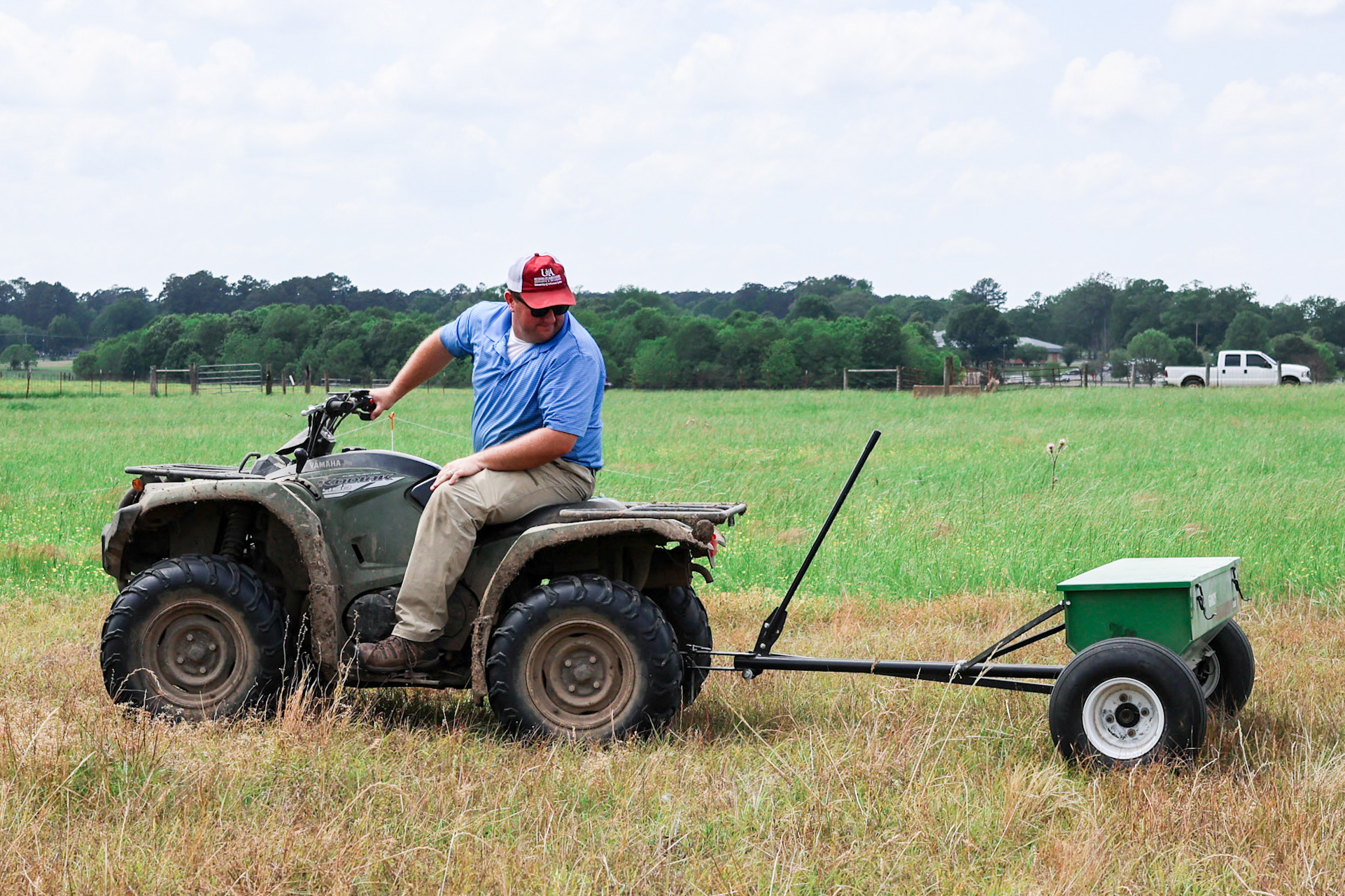UAM NEWS
UAM Partners in Multi-State Study on Crabgrass Pasture Establishment

Crabgrass isn’t just a lawn intruder — it’s one of Arkansas’ most popular and nutritious summer forages. A nine-state research team is digging deeper to measure the establishment of pasture plants and evaluate the potential risks of failure when incorporating crabgrass into forage systems.
Jonathan Kubesch, extension assistant professor of forages for the University of Arkansas System Division of Agriculture, seeded test plots this past summer on the University of Arkansas at Monticello farm. He compared broadcasting versus harrowing as seeding and establishment, as well as comparing planting dates. The goal was to determine the best methods for measuring establishment success and failure using crabgrass as a quick-growing model.
Seeding and data collection
Before planting, the test plot was burned down with a two-quart acre rate of glyphosate. Crabgrass was then seeded either in late March or in late April, aligning with the current seeding window recommendation in extension fact sheet FSA3138 Crabgrass for Forage.
Katy Dick, assistant professor of agriculture with UAM, and Scott Hayes, Drew County extension agent, played key roles in data collection at the test plots on UAM’s farm. Together, the team is measuring the botanical composition, forage accumulation and visual appraisals of the different crabgrass plantings. These metrics are compared to existing targets to determine if stands succeeded or failed.
Though often considered a weed, crabgrass has high nutritional value and is palatable for grazing livestock. Previous studies conducted at the Division of Agriculture’s Southwest Research and Extension Center near Hope, Arkansas, showed crabgrass to be one of the first grasses grazed by animals introduced to a new pasture. Grazing can begin once grass reaches four to six inches but not be grazed closer than three inches above the soil surface to support regrowth. Highest yields of growth were seen under rotational grazing practices.
Preliminary results
Preliminary results show April plantings were more likely to meet or exceed benchmarks than stands planted in March. There appeared to be no difference in establishment success between harrowing seed into the soil as opposed to broadcasting it on top of the pasture, Kubesch noted.
The UAM site clearly demonstrated the importance of planting at the right time, Kubesch said. March plots had little if any crabgrass, whereas April plots had reasonable stands.
“Failure wasn’t all that bad in this trial,” Kubesch said. “Where we didn’t get crabgrass, our herbicide burned down and cleaned up the bahiagrass stand.”
Results from this research will help to update recommendations in south Arkansas and help cost-share programs factor the risk of stand failure into budgets. Kubesch estimates that an acre of improved crabgrass seed will cost $75 to plant when using pellet lime as a carrier when seeding.
Collaboration across the country
In addition to the demonstration site at UAM, Kubesch also has study plots in Grant, Ouachita, Saline and Sharp counties in Arkansas. His data will be shared and cross-referenced with researchers in Delaware, Iowa, Maryland, Massachusetts, Missouri, Ohio, Virginia and Wisconsin. Together, researchers will be able to compare findings across the country to provide producers with solid pasture recommendations.
“This project is an excellent example of how the University of Arkansas System can collaborate with partners across the country to tackle real challenges in forage production,” Kubesch said. “By combining resources and expertise, we hope to generate practical solutions that improve pasture establishment and long-term field productivity.”
Call for participants in 2026 study
Kubesch is currently looking for additional study sites in Arkansas to begin planting in the spring of 2026. If you would like to be part of his study, please reach out to your local Cooperative Extension Service agriculture agent. Visit uaex.uada.edu/counties to find contact information for your local office.